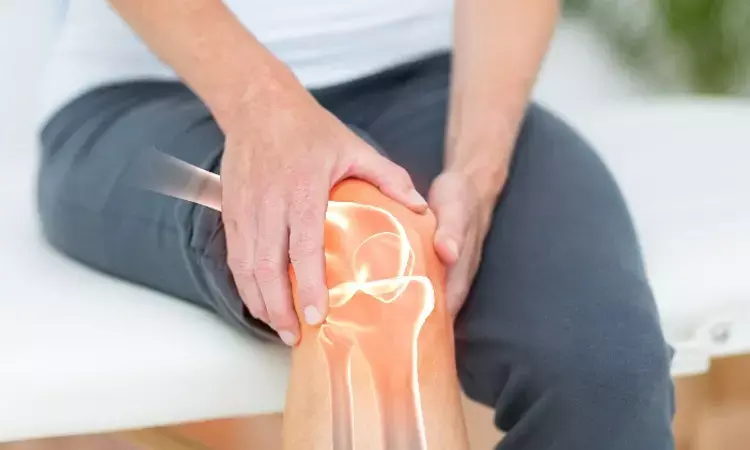- Home
- Medical news & Guidelines
- Anesthesiology
- Cardiology and CTVS
- Critical Care
- Dentistry
- Dermatology
- Diabetes and Endocrinology
- ENT
- Gastroenterology
- Medicine
- Nephrology
- Neurology
- Obstretics-Gynaecology
- Oncology
- Ophthalmology
- Orthopaedics
- Pediatrics-Neonatology
- Psychiatry
- Pulmonology
- Radiology
- Surgery
- Urology
- Laboratory Medicine
- Diet
- Nursing
- Paramedical
- Physiotherapy
- Health news
- Fact Check
- Bone Health Fact Check
- Brain Health Fact Check
- Cancer Related Fact Check
- Child Care Fact Check
- Dental and oral health fact check
- Diabetes and metabolic health fact check
- Diet and Nutrition Fact Check
- Eye and ENT Care Fact Check
- Fitness fact check
- Gut health fact check
- Heart health fact check
- Kidney health fact check
- Medical education fact check
- Men's health fact check
- Respiratory fact check
- Skin and hair care fact check
- Vaccine and Immunization fact check
- Women's health fact check
- AYUSH
- State News
- Andaman and Nicobar Islands
- Andhra Pradesh
- Arunachal Pradesh
- Assam
- Bihar
- Chandigarh
- Chattisgarh
- Dadra and Nagar Haveli
- Daman and Diu
- Delhi
- Goa
- Gujarat
- Haryana
- Himachal Pradesh
- Jammu & Kashmir
- Jharkhand
- Karnataka
- Kerala
- Ladakh
- Lakshadweep
- Madhya Pradesh
- Maharashtra
- Manipur
- Meghalaya
- Mizoram
- Nagaland
- Odisha
- Puducherry
- Punjab
- Rajasthan
- Sikkim
- Tamil Nadu
- Telangana
- Tripura
- Uttar Pradesh
- Uttrakhand
- West Bengal
- Medical Education
- Industry
Hypothyroidism associated with low bone density among women, finds study

Researchers of Denmark found in a recent study that Women with hypothyroidism have a lower bone mineral density (BMD) even after euthyroidism had been reestablished. The study findings were published in the journal Endocrinology.
Risk of fracture in hypothyroid patients is debated, and the effects of hypothyroidism on bone microarchitecture and strength are unclarified. For this purpose, the researchers conducted a cross-sectional control study and a prospective study to evaluate these characteristics by high-resolution peripheral quantitative computed tomography (HR-pQCT).
In a cross-sectional control study, they compared the investigational group which included 32 hypothyroid women (mean age; 47 ± 12 years) suffering from Hashimoto's thyroiditis with the control group of 32 menopause-matched healthy women. In a prospective study, they reexamined 27 women 1 year after restoration of euthyroidism.
They performed HR-pQCT of the distal radius and tibia and dual-energy X-ray absorptiometry (DXA) of the spine and hip. Bone strength was estimated using a finite element analysis (FEA).
In Cross-sectional control study, researchers found that in radius bone, the total (mean 14.6 ± 29.3% ) and trabecular bone areas (19.8 ± 37.1%) were higher in hypothyroid patients when compared with the controls and the cortical volumetric bone mineral density (vBMD) were lower (−2.2 ± 6.5%) in hypothyroid patients than in controls.
They noted all indices of tibia cortical and trabecular vBMD, microarchitecture, and estimated bone strength were similar between groups, even for hip and spine areal BMD (aBMD).
In Prospective study, they found mean cortical (−0.9 ± 1.8%) and trabecular (−1.5 ± 4.6%) vBMD of radius were decreased, and cortical porosity was increased by 18.9 ± 32.7%.
In the tibia they noted, mean total vBMD (−1.1 ± 1.9%) and cortical vBMD (−0.8 ± 1.4%) were decreased, while cortical porosity (8.2 ± 11.5%) and trabecular area (0.2 ± 0.6%) were increased.
They found no changes in FEA and they also recorded a decrease aBMD (−1.3 ± 3.0%) of the lumbar spine.
The authors concluded, "Hypothyroidism was associated with an increased trabecular bone area and a lower mineral density of cortical bone in the radius, as assessed by HR-pQCT. Restoration of euthyroidism mainly increased cortical porosity, while estimated bone strength was unaffected".
For further information:
Medical Dialogues Bureau consists of a team of passionate medical/scientific writers, led by doctors and healthcare researchers. Our team efforts to bring you updated and timely news about the important happenings of the medical and healthcare sector. Our editorial team can be reached at editorial@medicaldialogues.in.
Dr Kamal Kant Kohli-MBBS, DTCD- a chest specialist with more than 30 years of practice and a flair for writing clinical articles, Dr Kamal Kant Kohli joined Medical Dialogues as a Chief Editor of Medical News. Besides writing articles, as an editor, he proofreads and verifies all the medical content published on Medical Dialogues including those coming from journals, studies,medical conferences,guidelines etc. Email: drkohli@medicaldialogues.in. Contact no. 011-43720751


